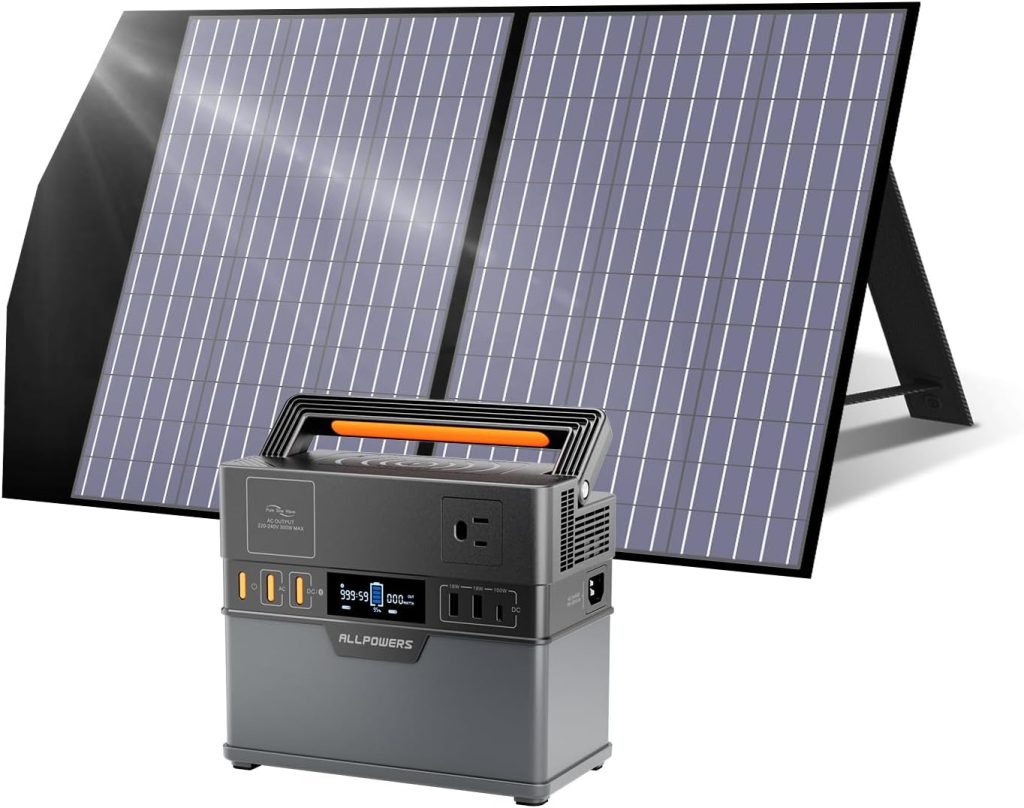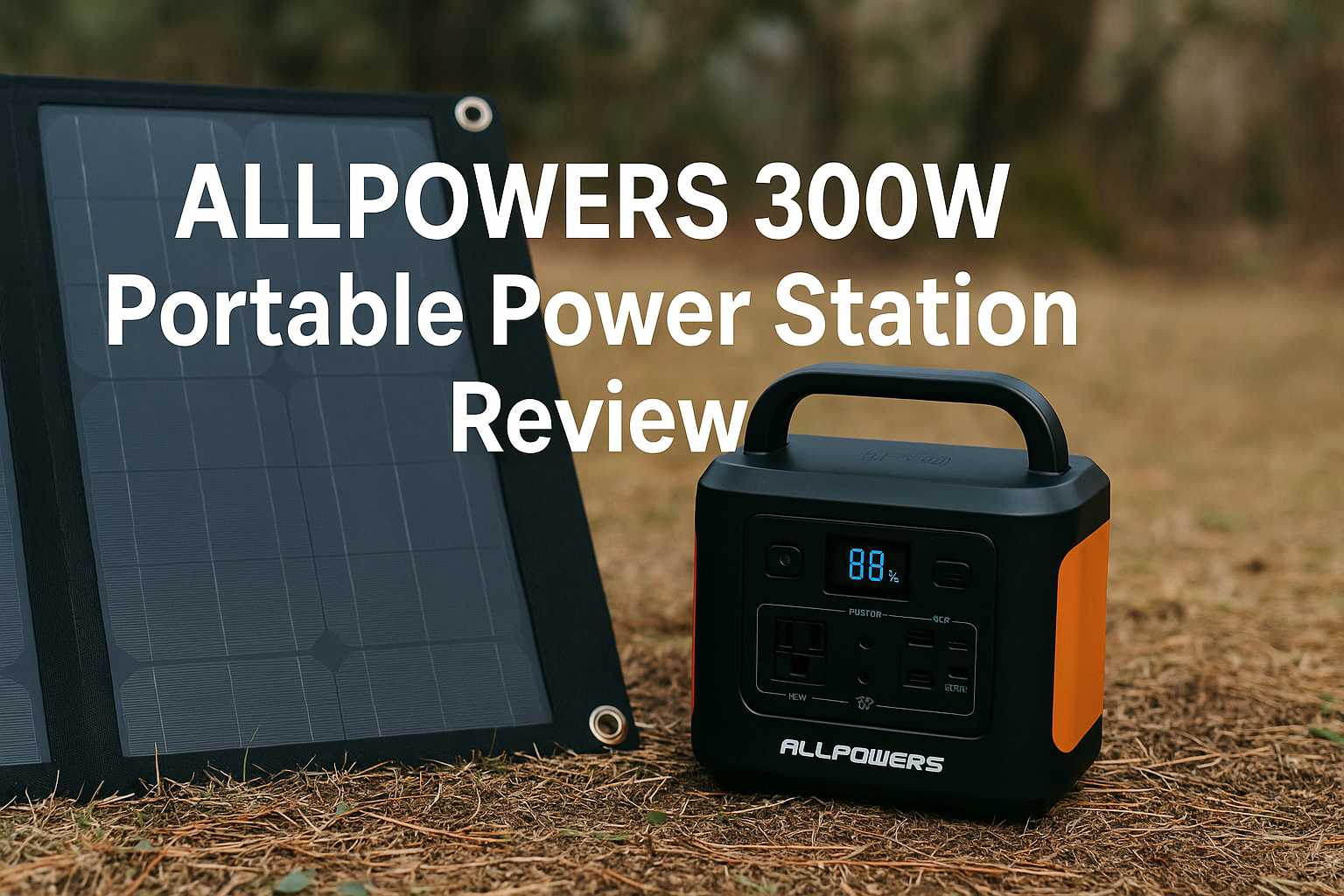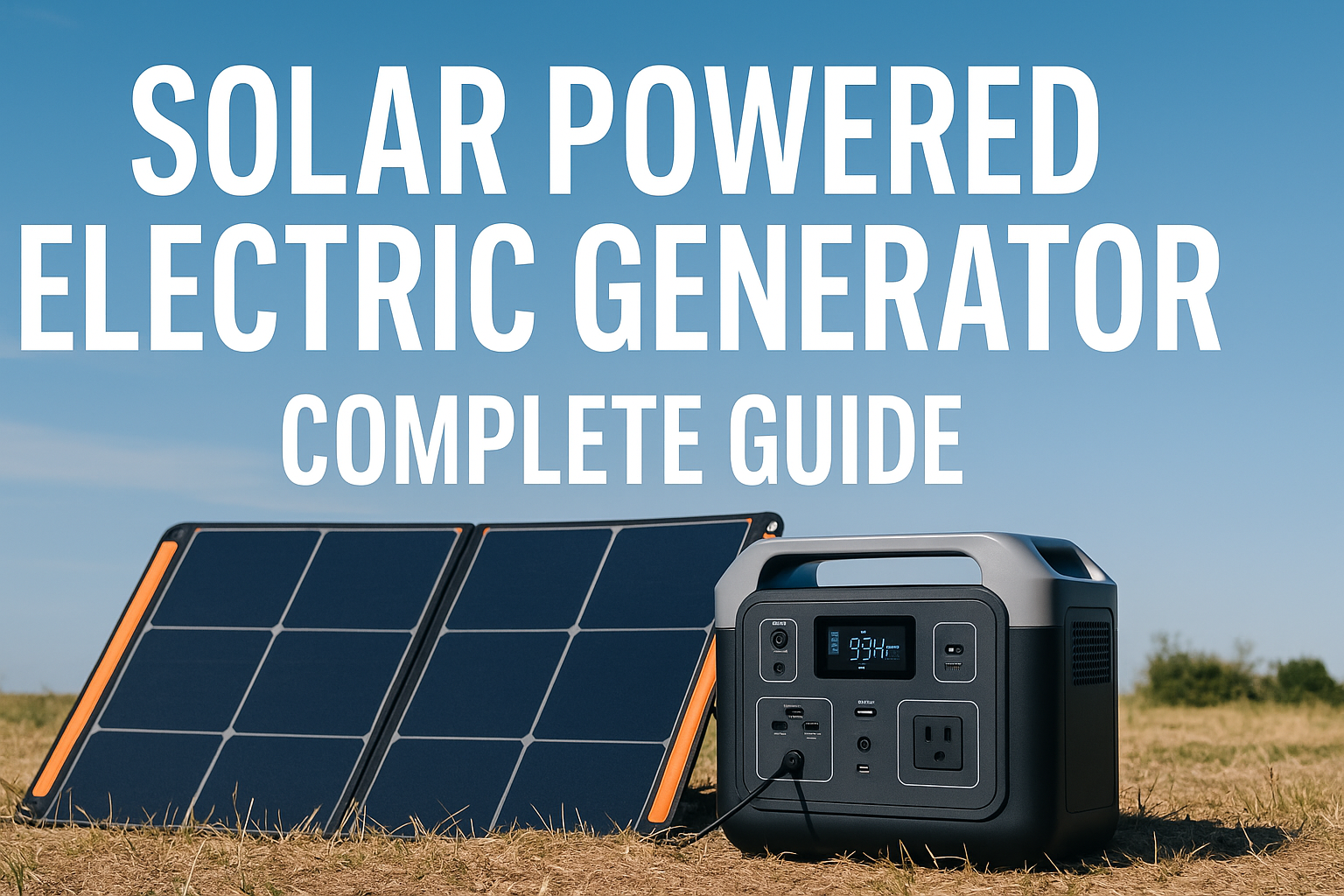Portable power stations are quickly becoming must-have gear for campers, RV travelers, and even everyday households. With more people working remotely and planning off-grid trips, the demand for compact, rechargeable backup power has skyrocketed. Gone are the days when you had to rely on noisy gas generators that smelled like fumes and annoyed the neighbors.
The ALLPOWERS 300W Portable Power Station (often called the S300 or S300 Plus) sits right in that sweet spot—small enough to carry anywhere but powerful enough to keep essential devices running. With features like a 288Wh lithium battery, pure sine wave inverter, wireless charging, and 100W solar input, it promises to deliver flexibility without breaking the bank.
But how well does it really perform? Is it durable enough for camping, reliable during emergencies, and worth your money compared to bigger brands like Jackery or EcoFlow? In this review, I’ll break down everything you need to know, from design and performance to strengths, weaknesses, and real-life use cases.
First Impressions: Compact, Handy, and Modern
When you first look at the ALLPOWERS 300W, it feels less like an industrial machine and more like a high-tech gadget. It’s about the size of a small shoebox and weighs around 7.5–8.8 pounds (≈3.5–4 kg). That means you can carry it with one hand without feeling like you’re hauling a brick.
The built-in handle is sturdy and folds neatly, making it easy to grab on the way to a campsite, picnic, or even just move around the house during a blackout.
A detail I really like is the wireless charging pad on top. Drop your phone on it and it starts charging—no cables required. It’s not blazing fast (around 5W), but it’s a convenient touch, especially when you’re outdoors.
The LCD display is clear, showing input/output wattage, battery percentage, and estimated time remaining. Unlike some competitors, the S300 also pairs with a Bluetooth app that lets you check everything remotely and even switch ports on or off from your phone.
Key Specifications (Made Simple)
Here’s a breakdown of what’s inside this little powerhouse:
| Feature | What It Means for You |
|---|---|
| Battery Capacity: 288 Wh | Enough to charge a smartphone ~20 times, a laptop 3–4 times, or run a mini-fridge for ~6 hours. |
| AC Output: 300W Continuous (600W Peak) | Handles small appliances and electronics. The “peak” covers startup surges. |
| USB-C Port: 100W PD | Can fast-charge modern laptops like MacBooks, gaming laptops, or tablets. |
| USB-A Ports: Multiple | Standard charging for phones, cameras, and other USB devices. |
| 12V Cigarette Lighter Port (60W Max) | Powers car fridges, inflators, or CPAP machines. |
| Solar Input: Up to 100W (MPPT) | Recharge it with solar panels in ~4–5 hours under good sun. |
| Wireless Charging Pad: 5W | Cable-free charging for compatible phones. |
| Size: 8.1 × 6.5 × 4.3 in | Compact, easy to store in a backpack or RV. |
| Weight: ~7.5–8.8 lbs | Portable and manageable for most users. |
| Inverter Type: Pure Sine Wave | Safe for sensitive electronics (laptops, CPAP machines). |
| App Control: Yes (Bluetooth) | Monitor and manage power from your phone. |
The USB-C 100W output is a standout. Many portable stations in this size only manage 60W, which can be too weak for heavy laptops. Here, you can run or charge power-hungry devices without a hitch.

Real-World Performance: How It Handles Daily Use
Charging Everyday Devices
This is where the ALLPOWERS S300 shines. Plugging in multiple devices at once feels effortless. Here’s what you can expect in practice:
- Smartphone (10W): Around 20–25 charges.
- Laptop via USB-C PD (60–80W): 3–4 full charges.
- Tablet/iPad (30W): 7–8 full charges.
- Mini-fridge (45W): 5–6 hours of runtime.
- CPAP machine (40–60W): 5–6 hours of reliable use—great for campers.
- LED light string (20W): 10–12 hours.
- WiFi router + TV (100W): 3–4 hours during a blackout.
Because the inverter is pure sine wave, your electronics stay safe, unlike with cheaper modified sine wave units that can fry delicate components.
Charging the Power Station Itself
You’ve got three main ways to recharge it:
- AC Wall Charger: The fastest and most reliable. Expect a full charge in 5–6 hours.
- Solar Panels (100W Max): With good sunlight, you can top it up in 4–5 hours. Of course, cloudy days will take longer.
- Car Charger: Slowest option, but useful when driving. Usually 7–8 hours.
One clever trick is that you can combine solar + USB-C input to shorten charging time. This “dual input” makes it more flexible if you’re on the road or outdoors.
Strengths: What Makes the S300 a Smart Buy
- Port Variety – AC outlets, USB-C, USB-A, 12V DC, wireless charging. Few power stations this small give you so many options.
- Compact & Portable – Small footprint, lightweight, and easy to carry. Great for campers and travelers.
- USB-C 100W PD – Strong enough for high-demand laptops. A big plus over many rivals.
- Solar Friendly – Built-in MPPT controller makes solar charging efficient.
- App Control – Monitor battery life and switch ports from your phone.
- Surge Protection – Handles up to 600W briefly, so devices with startup spikes won’t trip it immediately.
Limitations: Where It Falls Short
- Fan Noise – The cooling fan kicks in whenever the AC inverter is used. It’s not unbearably loud, but in a quiet tent at night, you’ll notice it.
- Unregulated 12V Port – The cigarette lighter port’s voltage drops as the battery drains, which may affect sensitive 12V gear.
- Slow Car Charging – Recharging in the car takes a long time. It’s more of an emergency option than a primary method.
- Accessories Not Always Included – Solar panels and some cables are sold separately, so budget accordingly.
- Durability Concerns – Some users report issues with customer service and long-term reliability. While many have no problems, it’s worth noting.

How It Compares to Other Brands
If you’re shopping for a portable power station in the 300W class, here’s how the ALLPOWERS S300 stacks up:
- Jackery Explorer 300: Well-built and popular, but USB-C is only 60W (not enough for some laptops). Costs more, too.
- EcoFlow River 2: Slightly larger, faster charging, but also more expensive. Doesn’t have wireless charging.
- Bluetti EB3A: Strong contender with LiFePO4 battery for longer lifespan, but heavier.
Verdict in comparisons: If you want value + features (100W USB-C, wireless pad, app control), the ALLPOWERS S300 is a solid pick. If you prioritize ultra-long battery life and brand reputation, Bluetti or EcoFlow might be better, though at a higher price.
Who Should Buy It?
- Campers & Travelers: Perfect for charging phones, cameras, drones, laptops, and small fridges.
- Emergency Preparedness: Keeps essentials running during a blackout.
- Students/Workers on the Go: Great for powering laptops in outdoor study spots or coffee shops.
- RV & Car Owners: Handy backup for trips, especially with solar charging.
Who Should Skip It?
- Heavy Appliance Users: Not for microwaves, heaters, or large power tools.
- Those Wanting Silence: Fan noise may annoy very sensitive sleepers.
- Ultra-Long Off-Grid Users: For weeks off the grid, you’d want 500–1000Wh capacity instead.
Tips for Long-Term Use
- Keep It Between 20–80% Charge for longer battery life.
- Avoid Extreme Heat or Cold when storing.
- Use Solar Regularly if you camp often—keeps the battery active.
- Don’t Overload It—stick to under 300W continuous.
- Update the App to ensure accurate monitoring.
Final Verdict: Should You Buy the ALLPOWERS 300W?
The ALLPOWERS 300W Portable Power Station is a feature-rich, compact, and affordable option for anyone who needs reliable portable power for small to medium devices. It’s not a beast meant to run your whole house, but for its size and price, it punches above its weight.
Pros: compact, versatile ports, 100W USB-C PD, solar-friendly, wireless charging, app control.
Cons: fan noise, slower car charging, unregulated 12V port, mixed customer support reviews.
On balance, if you’re looking for a portable, budget-friendly solar generator for camping, emergencies, or light off-grid work, this one is worth considering.
Overall Score: 7.5–8/10
A smart choice for light to moderate portable power needs—especially if bought on sale or bundled with solar panels.



